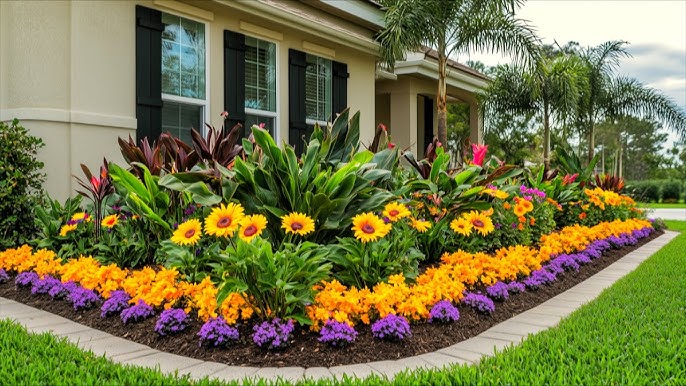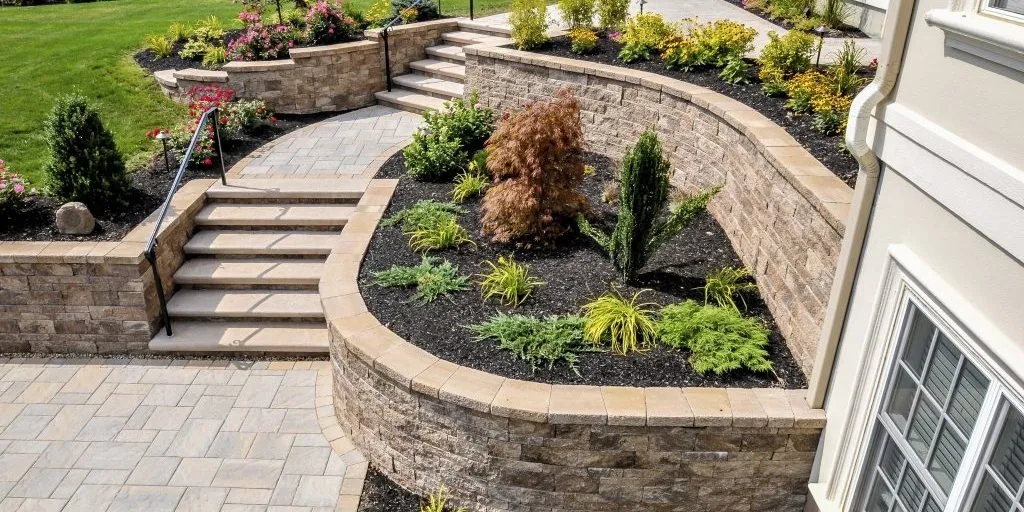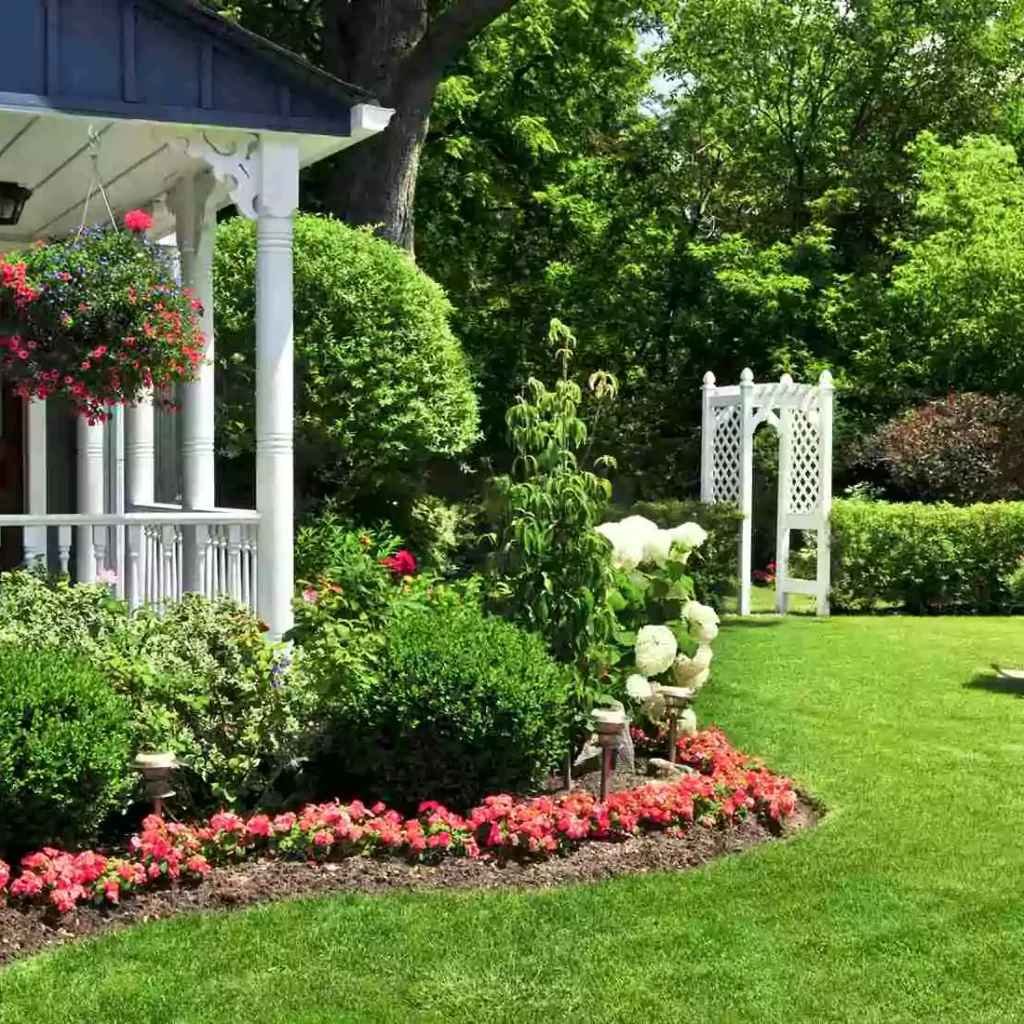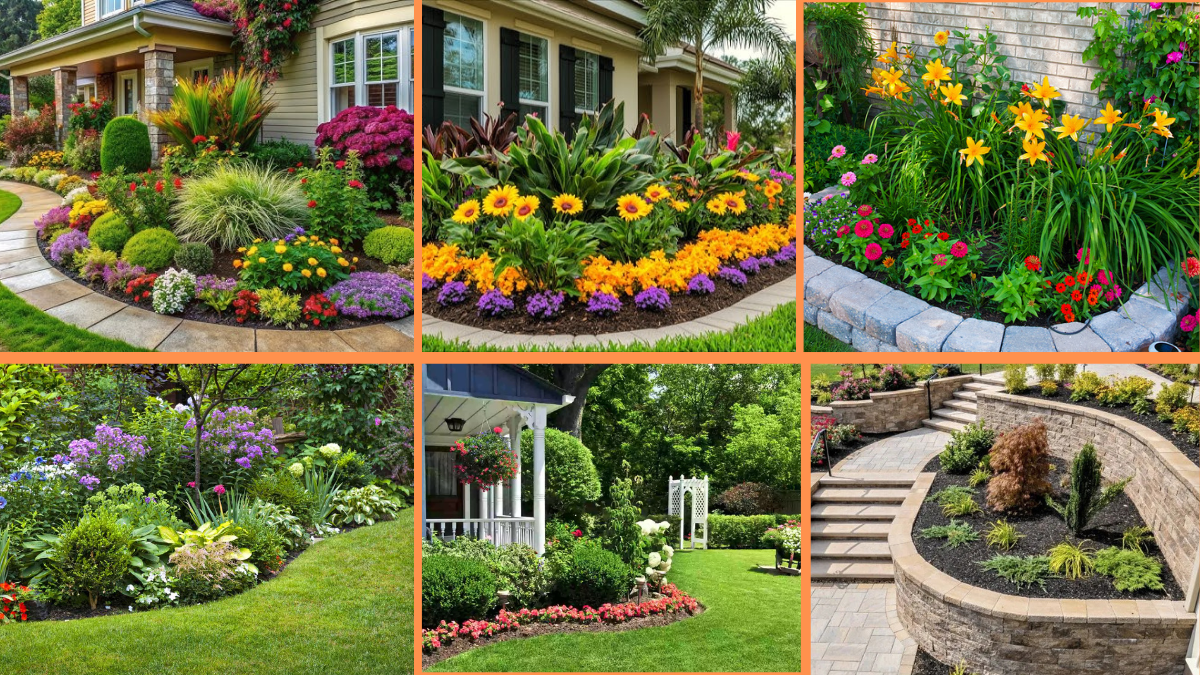Nothing breathes life into an outdoor space quite like a well-designed flower bed. A carefully planned flower bed not only enhances the beauty of your home but also creates a serene and colorful retreat where you can relax and reconnect with nature. Whether you have a spacious backyard or a cozy front yard corner, a stunning flower bed can elevate your landscape and add vibrant charm throughout the seasons.
If you’re ready to transform your garden with a captivating flower bed, here are 10 expert tips to help you create a show-stopping floral display.

1. Choose the Right Location
The foundation of a beautiful flower bed starts with selecting the perfect location. The spot you choose will influence your plant choices, the overall design, and the long-term success of your flower bed.
What to consider:
- Sun exposure: Most flowering plants thrive in full sunlight (6-8 hours daily). Observe your garden throughout the day to determine sun and shade patterns.
- Soil condition: Well-drained soil is essential. Avoid areas prone to waterlogging or extreme dryness.
- Visibility: Position your flower bed in areas where it can be appreciated, such as near patios, along walkways, or as a focal point in your yard.
A strategic location ensures that your flowers receive the care and conditions they need to flourish.

2. Design an Appealing Shape and Layout
A stunning flower bed isn’t just about the flowers—it’s also about the shape and structure. Move beyond traditional straight-edged designs and experiment with shapes that add flow and visual interest.
Popular shapes to consider:
- Curved or wavy borders for a natural, free-flowing look.
- Circular or oval beds as centerpieces in open areas.
- Island beds surrounded by lawn for a standalone feature.
- Raised flower beds for height and definition in smaller spaces.
Use garden hoses or string to outline your desired shape before you start planting. This gives you a clear idea of how it will look and allows adjustments before breaking ground.

3. Pick a Balanced Mix of Flowers
Diversity is the secret to a vibrant and captivating flower bed. A mix of flower types ensures visual appeal, texture, and season-long color.
Combine these plant types:
- Annuals: Fast-growing and colorful, annuals like zinnias, marigolds, and petunias bloom for a single season.
- Perennials: Reliable bloomers such as coneflowers, daylilies, and salvia return year after year.
- Bulbs: Tulips, daffodils, and lilies bring early and mid-season color.
- Ground covers: Creeping thyme, sedum, or vinca minor fill gaps and provide lush greenery.
Aim for a balanced selection so your flower bed stays colorful and textured throughout spring, summer, and fall.

4. Create a Thoughtful Color Scheme
One of the easiest ways to elevate your flower bed is by selecting a harmonious color palette. A well-chosen color scheme can evoke different moods and create visual unity.
Popular color themes:
- Monochromatic: Use varying shades of a single color for a soothing, elegant look.
- Complementary colors: Pair colors opposite each other on the color wheel, such as purple and yellow, for vibrant contrast.
- Analogous colors: Combine colors that sit next to each other, like red, orange, and yellow, for a warm, cohesive effect.
- Pastels: Soft pinks, blues, and whites create a delicate, romantic feel.
Consider the bloom colors and foliage shades when planning your color story to ensure visual consistency.

5. Pay Attention to Plant Heights
A beautiful flower bed should have visual depth and layering. Arrange plants according to their mature height to ensure every flower is visible and the design feels balanced.
Layering guide:
- Tall plants like sunflowers, delphiniums, and hollyhocks at the back of border beds or in the center of island beds.
- Medium-height plants such as daisies, coneflowers, and black-eyed Susans in the middle.
- Low-growing flowers and ground covers like pansies, marigolds, and creeping phlox at the front.
This tiered structure adds dimension, prevents overcrowding, and ensures each plant gets sunlight.

6. Improve Your Soil Before Planting
Healthy soil is the backbone of a successful flower bed. Before planting, spend time preparing and enriching the soil to create optimal growing conditions.
Steps to prepare your soil:
- Remove weeds, stones, and debris.
- Loosen the soil to a depth of 12-18 inches for better root penetration.
- Mix in organic matter like compost, aged manure, or peat moss to enhance fertility and drainage.
- Test the soil pH; most flowers prefer a slightly acidic to neutral range (6.0-7.0). Amend accordingly with lime or sulfur if needed.
Well-prepared soil ensures strong, vibrant plants with abundant blooms.
7. Add Decorative Edging
Defining your flower bed with an attractive edge not only enhances its appearance but also keeps grass and weeds from creeping in.
Edging options:
- Natural trench edging: A simple, clean-cut trench made with a spade.
- Stone or brick edging: Adds rustic or formal charm.
- Wooden or log borders: Provide a cottage-garden feel.
- Metal or plastic edging: Modern and low-maintenance.
Edging provides structure, frames your flowers beautifully, and simplifies garden maintenance.
8. Incorporate Garden Accents and Accessories
To turn a flower bed from ordinary to extraordinary, include decorative elements that complement your blooms and add character.
Creative accessories:
- Birdbaths, fountains, or small ponds to attract wildlife.
- Garden statues, lanterns, or sculptures for focal points.
- Trellises, arches, or obelisks for climbing plants like clematis or sweet peas.
- Pathways of stepping stones or gravel for easy access and visual interest.
These features add personality, charm, and functionality to your flower bed.
9. Mind Your Plant Spacing
It’s tempting to cram in as many flowers as possible for instant impact, but overcrowding leads to competition for nutrients, poor airflow, and disease problems.
Smart spacing tips:
- Follow the spacing guidelines provided on plant tags.
- Allow extra room for fast-spreading or larger-growing varieties.
- Fill in open areas with low-maintenance ground covers instead of overplanting with large flowers.
Proper spacing ensures each plant has room to grow and reduces maintenance headaches later.
10. Commit to Regular Care and Maintenance
Even the most beautifully designed flower bed requires ongoing care to keep it stunning all season long.
Essential maintenance tasks:
- Deadhead spent flowers to encourage continuous blooming.
- Weed regularly to prevent competition and maintain tidiness.
- Mulch with organic matter like bark or straw to retain moisture and suppress weeds.
- Water consistently, especially during dry spells. Deep, infrequent watering is better than shallow daily sprinkles.
- Fertilize as needed with a balanced, slow-release fertilizer or organic options like compost tea.
Consistent attention keeps your flower bed healthy, colorful, and immaculate.
Final Thoughts
Creating a stunning flower bed is a joyful, rewarding project that can transform your outdoor space into a colorful paradise. With the right planning, thoughtful plant selection, and ongoing care, your flower bed can become a showpiece that delights you and your guests all year long.
From choosing the perfect location to designing layered layouts and adding charming accessories, these 10 practical tips will guide you in building a flower bed that’s not only beautiful but also a thriving, living work of art.





